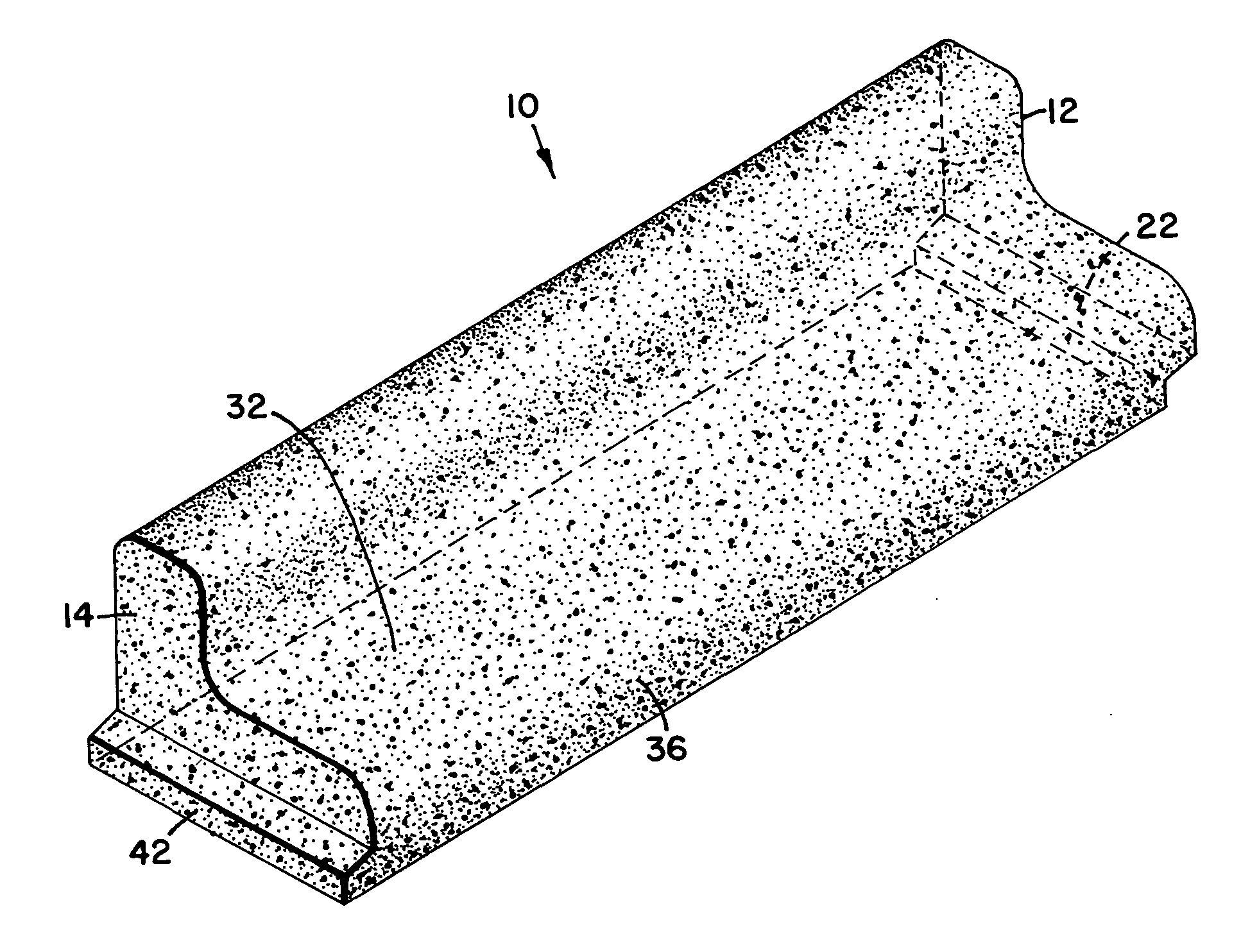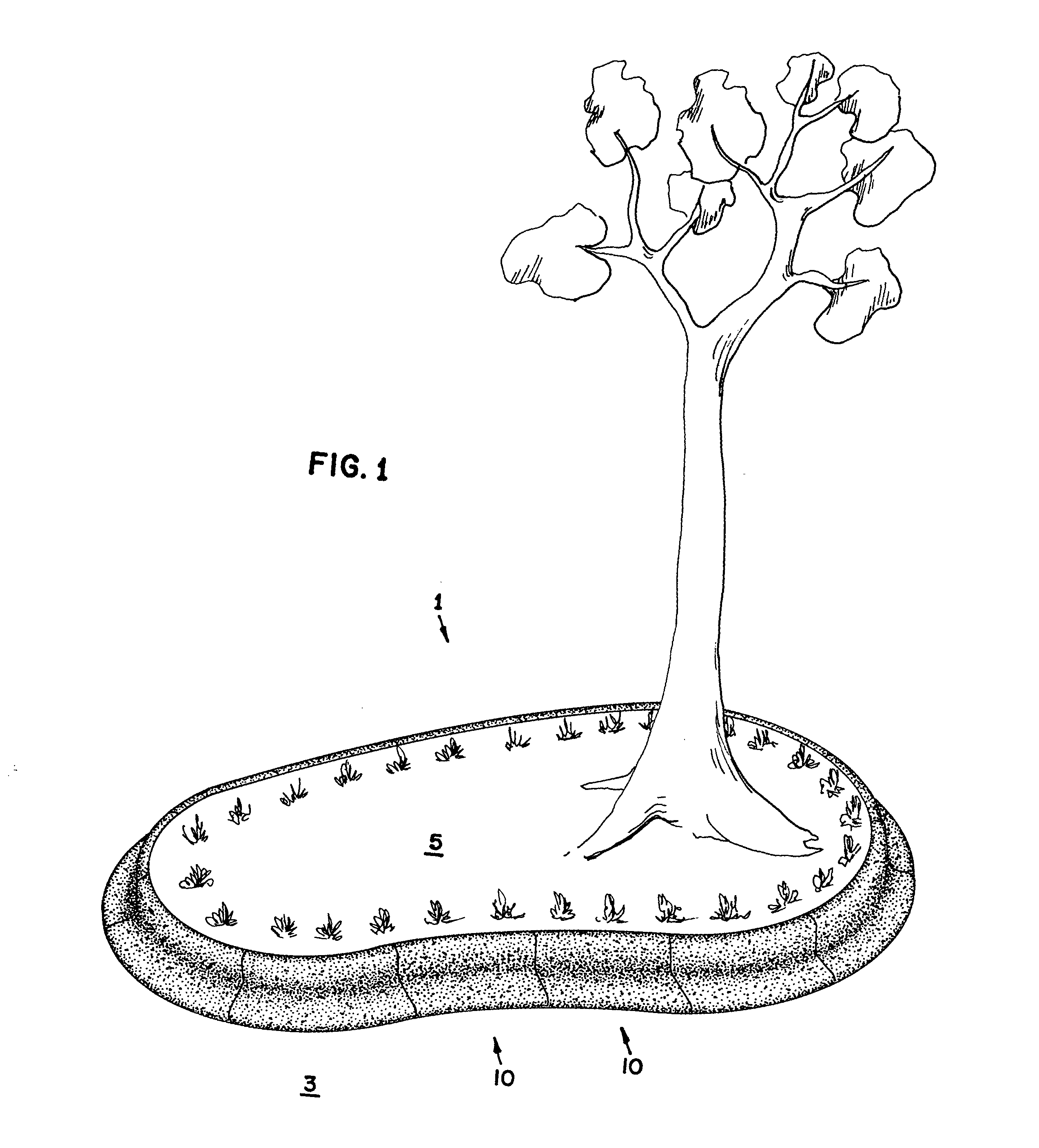Landscape edging, and methods
a technology of landscape edging and concrete, applied in the field of concrete edging blocks, can solve the problems of difficult to straighten plastic, uneven edging, and inability to fix materials in straight lines or measured curves, and achieve the effects of easy initial installation, labor-intensive process, and easy later modification
- Summary
- Abstract
- Description
- Claims
- Application Information
AI Technical Summary
Benefits of technology
Problems solved by technology
Method used
Image
Examples
Embodiment Construction
[0041] Referring to the figures there is generally illustrated therein a preferred embodiment of a landscape edging that incorporates the principles of this invention. While the preferred embodiment of the invention will be described in association with its applicability to landscape edging, it will be understood that the broad principles of the invention are not limited to such products or to the specifics of the preferred embodiment machine disclosed. The described edging represents one clear example incorporating the principles of the claimed invention, but the invention is not intended to be construed in a limiting manner as a result of the preferred embodiment disclosure.
[0042] In FIG. 1 there is illustrated a typical application for landscape edging according to the present invention. Continuous edging 1, made of multiple edging blocks, such as edging block 10 according to the present invention, is installed to provide a separation or break between two areas 3, 5, one of the ...
PUM
 Login to View More
Login to View More Abstract
Description
Claims
Application Information
 Login to View More
Login to View More - R&D
- Intellectual Property
- Life Sciences
- Materials
- Tech Scout
- Unparalleled Data Quality
- Higher Quality Content
- 60% Fewer Hallucinations
Browse by: Latest US Patents, China's latest patents, Technical Efficacy Thesaurus, Application Domain, Technology Topic, Popular Technical Reports.
© 2025 PatSnap. All rights reserved.Legal|Privacy policy|Modern Slavery Act Transparency Statement|Sitemap|About US| Contact US: help@patsnap.com



